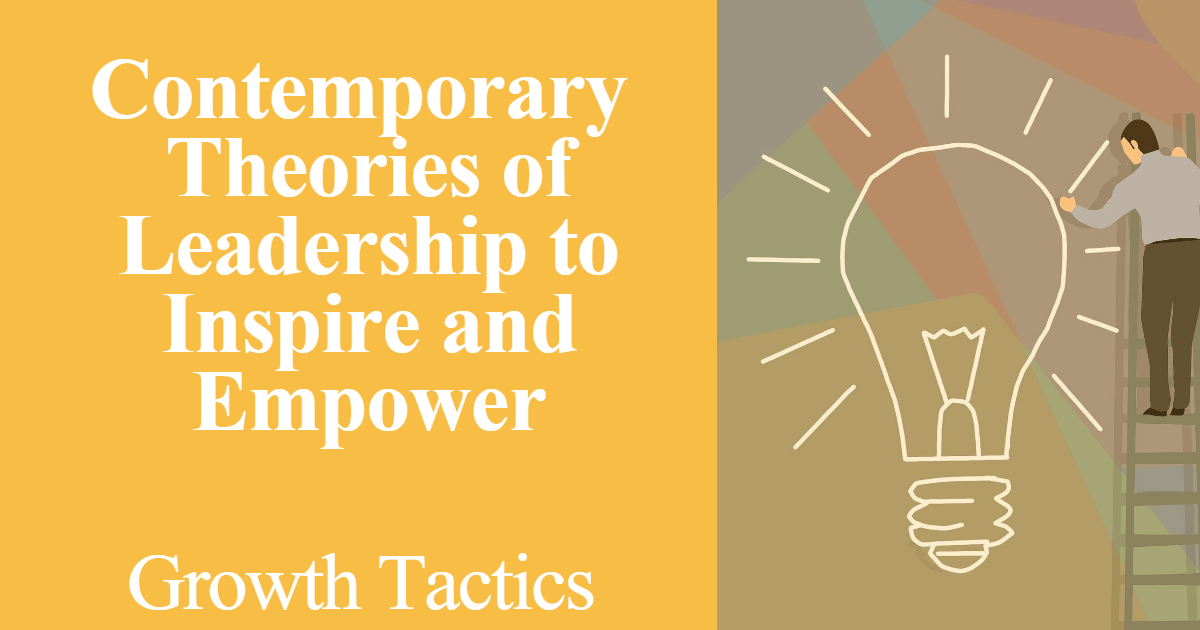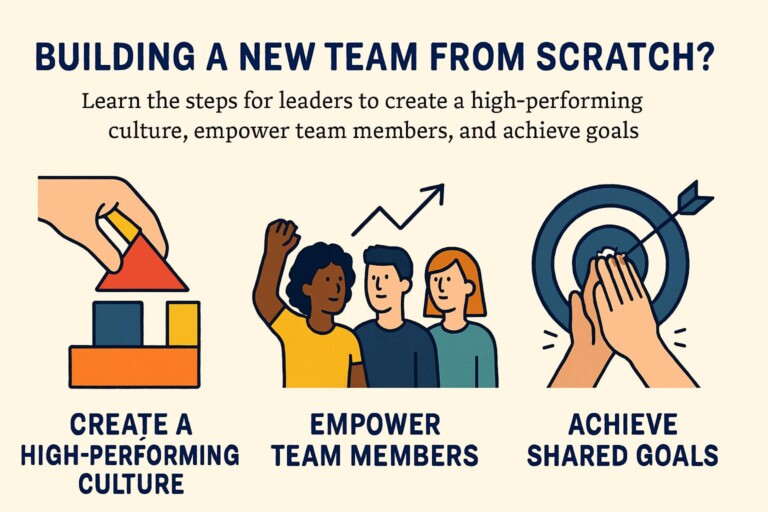Contemporary theories of leadership have emerged in recent decades as the world of work has become more complex, dynamic, and diverse. Unlike traditional leadership theories which focus on the traits and behaviors of effective leaders, contemporary theories examine leadership through various lenses to account for different contexts and challenges. These modern perspectives provide a more nuanced understanding of leadership in today’s organizations.
Contemporary leadership theories are defined as those developed from the mid-1980s onward, as researchers shifted their focus towards charismatic, transformational, and visionary leadership styles. This transition marked a move away from viewing leadership as either task-focused or relationship-focused. Instead, contemporary theories acknowledge the importance of both elements while emphasizing the role of leaders in inspiring change, empowering followers, and aligning organizational objectives with individual and societal needs.
The evolution of contemporary leadership theories reflects broader shifts in the workplace. As organizations have become less hierarchical, theorists have highlighted the value of participative leadership, shared leadership, and servant leadership approaches which actively engage employees. Meanwhile, increased diversity has led to theories that address cross-cultural leadership, ethical leadership, and emotional intelligence. Rapid technological advances require leaders who can embrace innovation, take risks, and navigate complexity and uncertainty.
By integrating multiple perspectives, contemporary leadership theories provide a toolbox of approaches to effectively lead and motivate teams in the modern workplace. Understanding these theories equips leaders with the flexibility and skills to adapt their style to fit diverse settings, empower followers, and drive positive organizational change. With their focus on ethics, values, and human relationships, contemporary theories reflect the complex responsibilities leaders face in our globally connected world.
Jump To Section
Transformational Leadership Theory
Transformational leadership is one of the most influential contemporary leadership theories. First introduced by James MacGregor Burns in 1978, transformational leadership focuses on inspiring followers to commit to a shared vision and goals for an organization. This leadership approach seeks to create positive change in followers, building their motivation, morale, and performance.
Some key characteristics of transformational leaders include:
- Charisma – Transformational leaders have a captivating style that attracts followers. They lead with passion and conviction.
- Inspiration – These leaders motivate and inspire followers to buy into their vision. They communicate high expectations.
- Intellectual stimulation – Transformational leaders encourage innovation and creativity in followers by questioning assumptions and approaching old situations in new ways.
- Individualized consideration – They demonstrate genuine concern for the needs and feelings of followers. Each follower is valued for their individual talents and contributions.
By exhibiting these traits, transformational leaders empower followers to take ownership over their work and develop their full potential. This leads to higher levels of performance, engagement, and commitment to organizational goals.
An example of transformational leadership is Lee Iacocca’s revival of the Chrysler corporation in the 1980s. Facing bankruptcy, Iacocca inspired employees to believe in the company again, set a bold new vision, and restructured operations. His transformational approach is credited with turning Chrysler around. Other transformational business leaders include Steve Jobs of Apple and Howard Schultz of Starbucks.
Authentic Leadership Theory
Authentic leadership is centered around the idea that leaders should lead with purpose, values, and integrity. Rather than conforming to expectations of what a leader should be, authentic leaders remain true to who they are as people and lead from their core values. This type of leadership emphasizes self-awareness, relational transparency, internalized moral perspective, and balanced processing.
Some key characteristics of authentic leaders include:
- Strong sense of purpose and passion for their role as leaders
- Lead with their hearts as well as their heads
- Value openness and truthfulness in their relationships
- Make decisions based on their morals and convictions
- Are self-aware and reflective, understanding their own strengths and weaknesses
Authentic leadership builds trust and credibility among followers. When leaders are clear about their values and act with integrity, followers are more likely to trust them. Authenticity also promotes greater engagement and dedication from team members. However, this approach can be challenging in organizations that value conformity and expect leaders to fit a certain mold. Authentic leaders may face resistance and criticism if their style deviates too far from established leadership norms. But by staying true to themselves, authentic leaders can drive positive cultural change in their organizations over time.
Overall, authentic leadership provides many benefits such as higher employee engagement, greater trust in leadership, and the ability to promote ethical practices and positive change. However, succeeding as an authentic leader requires high levels of self-awareness and comfort with challenging the status quo when needed. This type of leadership is especially impactful today, when society has growing expectations for leaders to demonstrate transparency, integrity, and social responsibility.
Servant Leadership Theory: Putting Others First
Servant leadership is a leadership philosophy that prioritizes the needs of followers over the leader’s self-interest. Introduced by Robert Greenleaf in the 1970s, servant leadership turns traditional power structures upside down, with the aim of creating more ethical and caring institutions.
The servant leader’s priority is the well-being, growth, and empowerment of their followers. Rather than seeking to exert power and control, servant leaders aim to serve others first. They emphasize listening, empathy, awareness, persuasion, conceptualization, foresight, stewardship, commitment to growth, and community building. Servant leaders invest time and resources into developing their followers, helping them reach their full potential. The emphasis is on service over self-interest.
Servant leadership creates more participative and caring work environments. Followers often feel valued, empowered, and motivated under servant leadership. However, servant leadership also faces criticisms. Some believe it can enable ineffective followers and reduce organizational efficiency. Servant leadership requires a long-term perspective and may not yield immediate results. It can be challenging to implement in highly hierarchical or performance-driven cultures.
Servant leadership works best when there is a culture of service, when followers are receptive, and when the leader has time to invest in development. It is well-suited for non-profit, community, or membership-based organizations. Servant leadership provides an ethical approach to leadership that can increase job satisfaction, trust, commitment, and meaning. However, it does require putting followers’ needs first and emphasizing their growth over the leader’s self-interest.
Participative Leadership Theory: Involving Followers in Decision-Making
Participative leadership, also known as democratic leadership, is a contemporary leadership approach focused on involving followers in decision-making. This type of leadership emphasizes collaboration, open communication, and empowering team members.
The core principles of participative leadership include:
- Actively soliciting input from followers when making decisions
- Engaging team members in goal-setting and problem-solving
- Considering followers’ ideas and suggestions seriously
- Consensus-building to arrive at decisions acceptable to the team
- Providing opportunities for followers to take on leadership responsibilities
Participative leadership has several benefits when applied appropriately:
- Improves engagement, commitment, and job satisfaction by making people feel valued
- Taps into the diverse knowledge, skills, and experiences of the team
- Develops followers’ critical thinking, decision-making, and leadership skills
- Promotes creativity, learning, and innovation through diverse perspectives
- Builds trust, respect, and understanding between leaders and followers
This approach works best when:
- Followers are skilled, knowledgeable, and eager to engage
- The team environment features open communication and trust
- Problems require creative solutions that emerge from collaboration
- Buy-in and commitment from the team is critical for success
- There is adequate time for extensive discussion and consensus-building
However, participative leadership is less suitable when quick, decisive action is needed, or the team lacks the knowledge or willingness to be involved. Leaders should use discretion in applying this style.
Situational Leadership Theory: Adapting to Circumstances
Situational leadership theory proposes that leaders must adapt their style to fit the development level of followers in a specific situation. It was developed in 1969 by Paul Hersey and Ken Blanchard.
This theory states that leaders should diagnose the situation and evaluate the development levels of their followers. Based on this assessment, they should adapt their leadership style to match the needs of followers and demands of the situation. Leaders must be flexible and versatile.
There are four leadership styles in situational leadership theory:
- Telling – High directive, low supportive. Suitable for followers with low competence and commitment.
- Selling – High directive, high supportive. Suitable for followers with low to moderate competence but high commitment.
- Participating – Low directive, high supportive. Suitable for followers with high competence but variable commitment.
- Delegating – Low directive, low supportive. Suitable for followers with high competence and commitment.
Effective situational leaders can accurately diagnose the needs of their followers based on their competence and commitment. They are able to flex their leadership style based on the circumstances rather than sticking with one rigid approach. This flexibility allows them to get the most out of their followers.
Situational leadership requires that leaders have strong observational, diagnostic, and intervention skills. They need to be able to quickly assess situations, followers’ capabilities and motivations before selecting the appropriate leadership approach. With practice, situational leadership can become second nature to leaders.
Leader-Member Exchange (LMX) Theory: Building Strong Relationships
Leader-member exchange (LMX) theory focuses on the two-way relationship between leaders and followers and how the quality of this relationship influences outcomes. Unlike other leadership theories that look at leadership processes as a whole, LMX theory examines leadership through the lens of the dyadic relationship.
According to LMX theory, leaders develop different types of relationships or social exchanges with their followers. These relationships can vary from low-quality, transactional exchanges to high-quality, transformational exchanges. In low-quality LMX relationships, the interactions between leaders and followers are based purely on employment contracts or economic exchanges. There is little trust or respect, and leaders and followers keep interactions formal and task-focused.
In contrast, high-quality LMX relationships are characterized by mutual trust, respect, and obligation. Leaders and followers have more frequent interactions, demonstrate reciprocal influence, and believe in a shared vision. High LMX employees feel valued by their leaders, resulting in increased job satisfaction, commitment, and performance.
To improve LMX, leaders should aim to develop mature leadership relationships with all followers. This involves treating employees as partners, recognizing their individual needs and talents, and empowering them with greater decision-making autonomy. Leaders can assign high LMX employees as mentors and increase face-to-face interactions through coaching and feedback. Fostering open communication and actively supporting follower development will result in more mature, high-quality leader-member exchanges.
Shared Leadership Theory
Shared leadership is a distributed leadership model where leadership responsibility and influence are shared among team members. Unlike traditional hierarchical models where leadership flows top-down, shared leadership emphasizes collaboration, flexibility, and collective action to achieve team goals.
The benefits of shared leadership include increased engagement, commitment, and accountability from team members. By giving each member influence in decisions, shared leadership taps into the full potential, diverse skills and knowledge of the team. This leads to improved creativity, problem-solving and innovation. Shared leadership also develops leadership capabilities in all team members instead of just a few designated leaders.
However, shared leadership does present some challenges. It requires a high degree of trust, strong relationships, and good communication between team members. There can be confusion over roles and accountability if the shared leadership model is not clearly defined. Shared leadership may not work well in teams lacking maturity, competence, or motivation for collaboration.
Keys to successfully implementing shared leadership include:
- Establishing open communication channels and transparency
- Fostering a collaborative team culture
- Providing training in shared leadership principles
- Defining clear roles and responsibilities
- Developing conflict resolution processes
- Measuring team and individual performance
- Recognizing and rewarding collective achievements
- Selecting team members suited to shared leadership
- Transitioning gradually from hierarchical leadership
With the right culture and environment, shared leadership empowers teams to maximize their potential through collaborative effort.
Emotional Intelligence and Leadership
Emotional intelligence (EQ) has emerged as a critical leadership capability in contemporary organizations. EQ refers to a leader’s ability to understand, express, and regulate their own emotions while also understanding the emotions of others. Leaders with high EQ are adept at leveraging emotions in a positive manner to motivate, inspire, influence, and connect with their teams.
Developing self-awareness is foundational to strengthening emotional intelligence. Self-aware leaders have a clear understanding of their own emotions, values, strengths, and weaknesses. This enables them to manage their reactions, especially in stressful situations. Self-awareness also helps leaders better understand their impact on others.
In addition to self-awareness, empathy is a key component of EQ. Empathic leaders make the effort to see things from their team members’ perspectives. They are attuned to others’ emotions and can respond in ways that make people feel valued and understood. This fosters stronger connections and trust.
Leaders who excel in emotional intelligence are master influencers. They balance logic and reason with the ability to appeal to emotions. This helps them connect with people on a deeper level to inspire action. Emotionally intelligent leaders also know which emotional triggers to use to get the best out of different individuals.
Overall, emotional intelligence allows leaders to balance task objectives with the human aspects of their roles. This leads to more engaged and productive teams. Leaders can develop their EQ through introspection, feedback, empathy exercises, and practicing emotional regulation strategies. Higher EQ is associated with more effective contemporary leadership across contexts and cultures.
Power, Influence and Politics
Leaders can derive power from various sources, including their position, expertise, charisma, and connections. However, leaders must be careful in how they leverage different types of power and influence tactics.
Position Power
Position power comes from a leader’s formal authority within an organization. This includes legitimate power derived from their title and role, which enables them to reward or penalize employees. While position power has its advantages, leaders should use it judiciously and avoid overreliance on their authority.
Expert Power
Expert power stems from a leader’s skills, knowledge and competencies. As subject matter experts, leaders can influence others through their credibility and ability to provide solutions. However, leaders should take care not to flaunt their expertise or talk down to others.
Referent Power
Referent power arises from a leader’s charisma and interpersonal skills. Leaders who are liked and respected can persuade others through admiration and loyalty. However, leaders should avoid manipulating relationships simply to get their way.
Influence Tactics
Leaders rely on various influence tactics like rational persuasion, consultation, inspiration, collaboration, and even sometimes pressure. However, leaders should use these ethically and avoid aggressive tactics like intimidation or quid pro quo exchanges.
Organizational Politics
Navigating organizational politics requires emotional intelligence, cultural awareness, networking skills, and diplomacy. Leaders should avoid getting entangled in politics for self-gain or sabotaging others. Maintaining integrity, transparency and win-win strategies can help leaders succeed politically.
Overall, contemporary leadership emphasizes the ethical use of power to serve others. Leaders should reflect on how their actions might impact relationships and morale before wielding their influence.
Diversity, Ethics and Social Issues
The contemporary workplace is increasingly diverse, with teams composed of people from different backgrounds, cultures, and identities. As a result, leaders must develop cultural competence and promote equity, inclusion, and social justice within their organizations. Contemporary leadership theories emphasize leading diverse teams in an ethical, socially responsible manner.
Leading Diverse Teams
With globalization, migration, and changing demographics, most teams today are diverse. Leaders must value diversity and intentionally create inclusive environments where people feel respected, heard, and able to contribute their unique talents. This requires understanding implicit biases, dismantling oppressive systems, and giving voice to marginalized groups. Leaders should educate themselves on cultural differences, foster open communication, and facilitate mutual understanding between team members.
Promoting Equity and Inclusion
Contemporary leaders strive to create equitable organizations where everyone can thrive regardless of their identity and background. This means ensuring fair policies, processes, and structures that do not disadvantage certain groups. Leaders should audit existing systems for bias, implement positive changes, and track progress using data. They must also model inclusive behaviors, confront discrimination, and amplify unheard perspectives. Ongoing training on topics like unconscious bias helps promote equity and inclusion.
Ethics and Social Responsibility
With growing public scrutiny, leaders today must operate ethically and fulfill their social responsibilities. Contemporary leadership theories call for moral awareness, ethical decision-making, and balancing diverse stakeholder interests. Leaders should act with integrity, hold themselves and others accountable, and embed ethics into organizational culture. They must also consider their organization’s impact on society and the environment, and make responsible choices that address sustainability, climate change, human rights, and other societal challenges. This requires looking beyond profits to make a positive difference.
Conclusion: Embracing Contemporary Leadership Theories
Contemporary leadership theories represent a significant evolution from traditional models that focused heavily on control and command structures. The theories discussed offer more diverse, adaptive, and empowering approaches to leadership.
Key contemporary theories like transformational, authentic, servant, and shared leadership emphasize the importance of inspiring followers, leading with integrity, developing relationships, and distributing responsibility. Other theories highlight context, power dynamics, connections, complexity, and emotions in leadership.
No single leadership style is universally effective. The most successful leaders adapt their approach based on the situation, goals, and team. They draw upon different elements of contemporary theories as needed. For instance, a leader may take a more directive, transactional approach during a crisis, while focusing on empowerment and development when launching a new initiative.
The future of leadership will likely see new hybrid models emerge that blend the most impactful contemporary approaches to leadership. Technology, globalization, and other forces will continue to shape leadership needs. However, the core emphasis on authenticity, relationships, empathy, integrity, and service to others will remain relevant. Leadership training will need to keep pace with emerging workplace realities.
Organizations must commit to developing modern leadership capabilities at all levels. Doing so will prepare them to thrive in a complex, rapidly evolving world by building adaptable, empowered, and values-driven cultures.








